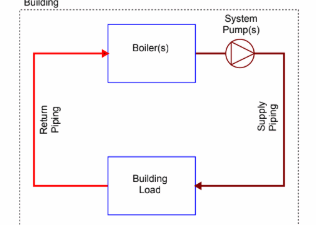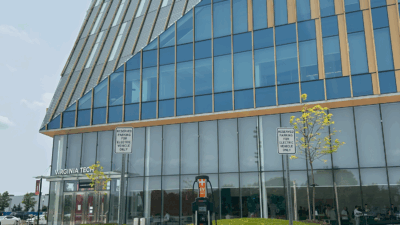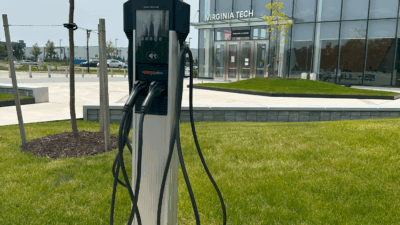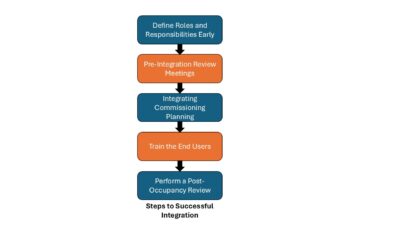
This article is sponsored by Cummins. In this Voices interview, Consulting-Specifying Engineer spoke with Hassan Obeid, Global Technical Sales Leader for New Energy Solutions at Cummins.
Obeid’s focus is on distributed generation, microgrid applications and integrated system solutions encompassing energy storage, fuel cell power systems, controls and energy modeling. He has been with Cummins since 2007 in a variety of roles: technical advising, design engineering, project engineering and application engineering. Obeid has designed power systems involving energy storage, fuel cells, generators, controls, transfer switches, switchgear and microgrids.
Consulting-Specifying Engineer: What are the key considerations when designing Battery Energy Storage Systems, known as BESS, for commercial, industrial and mission critical applications?
Hassan Obeid: When designing BESS for commercial, industrial and mission-critical applications, it starts with clearly understanding the use cases — whether it’s peak shaving, backup power, renewable integration or energy arbitrage.
Each use case has unique power and energy requirements, which define the appropriate discharge duration, C-rate, control strategies and, of course, codes and regulations — so, codes and standards.
It is also critical to define the beginning and end-of-life energy requirements, and usually that’s defined in watt-hours, kilowatt-hours or megawatt-hours.
Environmental and space constraints are also major factors, especially in retrofits or urban deployments. We also need to consider interconnection requirements with the utility — even when operating behind the meter, depending on the use case — or within a microgrid, and ensure compliance with local codes and permitting.
And finally, control system integration is essential. How the BESS will interface with microcontrollers, SCADA systems and existing infrastructure often dictates the success of the deployment.
How do you see BESS contributing to carbon and emission reduction efforts, especially when integrated with renewable energy sources and microgrids?
BESS plays a central role in enabling the energy transition. When combined with renewable energy sources like solar or wind, it allows for storing energy during periods of excess generation and dispatching it when the demand is high — essentially time-shifting clean energy to when it’s needed the most.
This helps reduce reliance on fossil-based peaker plants and minimizes curtailment of renewables. In microgrids, BESS stabilizes the system, smooths intermittent renewable output and supports loads during outages — allowing diesel-off or reduced diesel operation. This is particularly important in remote industries or campus-style grids.
From a broader sustainability perspective, BESS helps organizations reduce what’s called Scope 2 emissions and optimize demand-side energy, contributing to both environmental goals and long-term cost savings.
You might hear the terms Scope 1, Scope 2 and Scope 3. Scope 2 emissions are indirect greenhouse gas — GHG — emissions that result from a company’s purchase of energy, such as electricity, heat, steam or cooling from an external source.
What are the primary codes and standards that engineers need to be aware of when designing and deploying BESS solutions, and how are these evolving?
There are several critical codes and standards that consulting engineers must be familiar with.
In the United States, NFP 855 outlines installation requirements for stationary energy storage, while UL 9540 and 9540A address system-level safety and thermal runaway testing.
Of course, we have IEEE 1547, which governs interconnection standards — especially for grid-tied systems — and the National Electric Code, or NEC. Specifically, Articles 706 and 480 provide electrical safety and wiring requirements.
There are also international standards. Standards like IEC 62933 and 62619 are also important, especially for multi-region deployments.
What’s important to note is that these standards are rapidly evolving as energy storage adoption accelerates. For example, NFP 855’s next edition — so, 2026 — will introduce significant changes to energy storage system installation standards, including a separate Large Scale Fire Test (LSFT) requirement, stricter fire and explosion testing protocols, and enhanced requirements for deflagration prevention.
What are the most common applications of BESS systems today, and how do they differ in design and implementation across various industries?
The most common BESS applications include peak shaving, backup power, renewable energy integration and grid services. It’s important to note that solar and wind are intermittent resources, and so we can use batteries to couple with those intermittent resources — so we store the energy when the wind is blowing and when the sun is shining, at times when you really don’t have enough loads to consume all that power. So, we don’t have to do renewable curtailment. This is where BESS fits in.
In commercial and industrial settings, BESS is often used for demand charge reduction and time-of-use shifting, or TOU, which typically calls for short-duration, high-power systems.
In mission-critical environments like data centers, BESS can be applied in demand response or grid augmentation — particularly when utilities are unable to meet the high demand from these facilities.
We see another use case for BESS in data centers in addressing what’s called short-duration, high-power load oscillation that is generated by GPUs during AI training.
For utilities or large-scale campuses, BESS is used to support renewable integration and provide what’s called frequency and voltage support. This is when IEEE 1547 comes in handy for that requirement, which demands longer-duration systems and advanced control capabilities and inverters. For utility scale, you might see batteries that go for 4 to 6, 8, and even 12-hour durations.
What are the main technical challenges when synchronizing and load-sharing BESS with traditional synchronous generator sets in hybrid power systems?
One of the biggest technical challenges in hybrid systems is managing how BESS and traditional synchronous generators share loads and synchronize.
BESS can respond almost instantly to load changes, while generators are inherently a bit slower. Without proper coordination, this mismatch can cause load oscillations or reverse power flow.
Synchronization is another critical aspect. When BESS is used in a grid-forming role or is transitioning between islanded and grid-connected modes, the system must ensure proper voltage, frequency and phase alignment.
It also becomes essential to define a clear control hierarchy, especially through a microgrid controller, to ensure all sources are coordinated correctly during normal operation, transition and faults.
Additionally, it is important to note that because BESS contributes limited fault current, protection schemes must be carefully engineered to maintain safety and continuity during fault conditions.
The basic control algorithms — such as synchronization, which handles phase, voltage and frequency — are typically inherent in the inverter itself, just like a synchronous generator has the capability to match phase, voltage and frequency.
Load sharing is a little bit trickier. There is no common architecture for load sharing, like the isochronous load sharing that we see today across synchronous generators, for example. We don’t see a common protocol between a battery and a synchronous machine. Therefore, other methods such as droop are used to handle load sharing for this aspect.
Can you talk about sizing for battery energy storage systems, meaning number of batteries or energy calculations?
We need to establish something very critical when it comes to batteries. A synchronous machine, for example — today, if you deploy one that is 1 megawatt or 2 megawatts — in 5 years, in 10 years, even in 30 years, it’s still 1 megawatt or 2 megawatts. That power remains the same, and it delivers the same amount of energy.
Batteries, on the other hand, degrade over time. So, today, a battery that’s rated at 2 megawatt-hours — in six months, you’re going to lose a few percentage points of capacity. Over time, in 10 years, there’s the potential that the capacity will go down by 30%, meaning you’re left with 70% of the original. And for stationary applications, that’s typically considered end-of-life.
So, it’s very critical when you’re specifying a battery. Obviously, yes, we need to know the requirements — codes, voltage, frequency, temperature and load profile. But it’s also important to define what’s required at the end of life — after 3 or 4 years, or after 5 to 15 years.
What is required for the energy output? Are we expecting the same amount of energy at the end of life? If that’s the case, then we have two options. First, we could oversize the battery in year one. So if the project only calls for 2 megawatt-hours, but we still want to see 2 megawatt-hours in year 10, then we might have to install three containers — maybe go up to 4 or 6 megawatt-hours in year one to ensure we get 2 megawatt-hours at the end of life.
The second option is augmentation. So, every 3 to 4 years, we add more batteries — augment over time — to maintain the energy we need at year 10 or at the designated end of life.
What are the safety considerations and risk mitigation strategies when designing and deploying BESS systems?
Safety starts at the cell level and extends all the way to system integration and operations. Key considerations include thermal management, fire detection and suppression systems, and emergency access.
BESS should have active thermal control and must be monitored continuously to detect any anomalies in temperature or voltage. Based on the outcomes of UL 9540A — which is the testing for thermal runaway — enclosures may require specific containment or spacing strategies to prevent thermal propagation.
Fire suppression could involve inert gas, water mist or aerosol systems, depending on the installation type and local codes. You might have smoke detectors or lithium-ion particle detectors.
For example, the Cummins battery has multiple levels of safety inherently built into the battery itself. From a design perspective, ensuring proper spacing, aisle access and separation from occupied areas is critical — especially in NFP 855-compliant deployments.
Beyond the hardware, having well-defined commissioning protocols, operator training and emergency response plans are all part of this holistic safety strategy. Ultimately, safety isn’t just about compliance — it’s about proactively minimizing risk throughout the system’s lifecycle.
For more information, visit Cummins.



